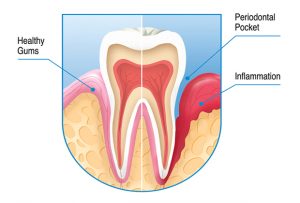Gums Surgery

Many people don’t even notice that their gums have receded, because it is a gradual process. However, over time, an exposed tooth root can not only look ugly, but can cause tooth sensitivity, especially when eating cold or hot foods. Eventually, gum recession, if not treated, can cause tooth loss. To repair the damage and prevent further dental problems, a gum tissue graft may be needed.


 ⦁ Pocket reduction (also known as gingival flap surgery). In this procedure, your surgeon folds back the gums and removes bacteria. The Periodontist (gum specialist) secures the gum tissue against your teeth, rather than allowing it to grow back on its own.
⦁ Pocket reduction (also known as gingival flap surgery). In this procedure, your surgeon folds back the gums and removes bacteria. The Periodontist (gum specialist) secures the gum tissue against your teeth, rather than allowing it to grow back on its own.
⦁ Regeneration. In this procedure, your Periodontist folds back the gums and removes disease-causing bacteria, then inserts bone grafts, membranes, or tissue-stimulating proteins (or any combination of the three) to encourage your gum tissues to regenerate and fit snugly around the teeth again.
⦁ Crown lengthening. In this procedure, your Periodontist removes an overgrowth of gum tissue from your teeth, making your teeth appear longer. This procedure is used for cosmetic effects as well as to treat gum disease.
⦁ Soft tissue graft. In this procedure, your Periodontist takes sample tissue from elsewhere in your mouth and attaches it to your gums to replace gum tissue that has receded or has been removed due to gum disease. This procedure is often used for cosmetic purposes as well as to treat gum disease because it covers areas where the root is becoming exposed and improves the appearance of the teeth.
